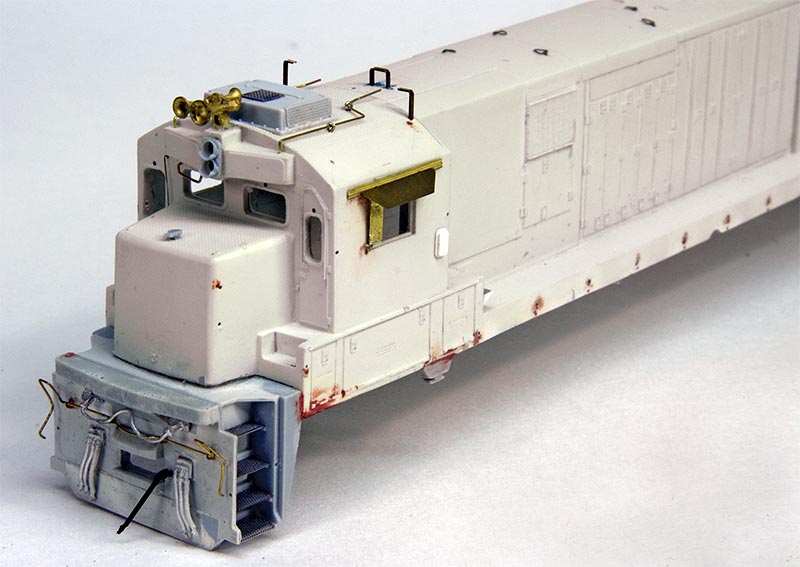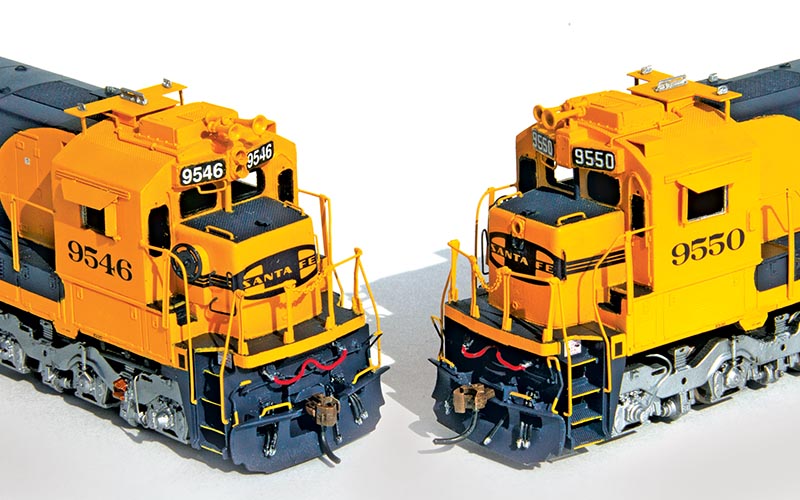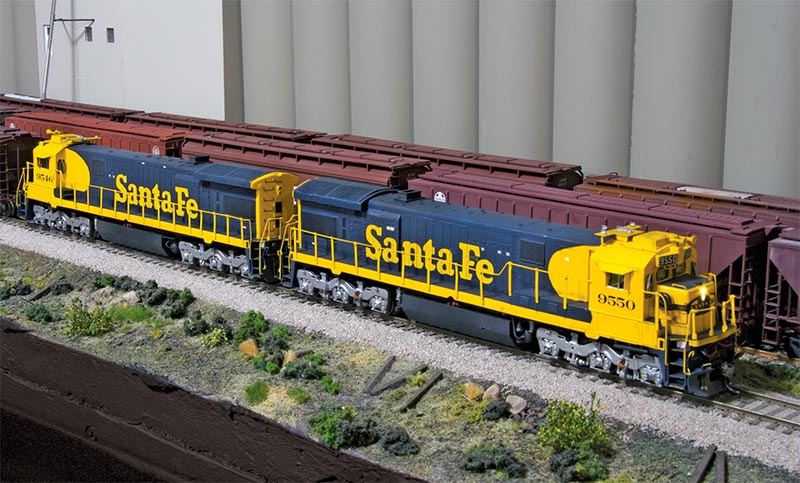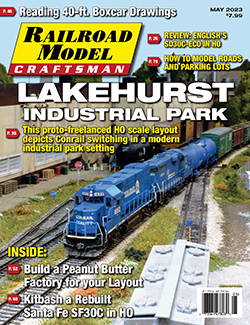The Atchison, Topeka, & Santa Fe Railway was a 12,000-mile system serving the American Southwest that stretched from Chicago to Houston, Denver, Los Angeles, and San Francisco. To serve that territory, the railroad rostered locomotives from all three major builders, but mostly General Electric and EMD in later decades. To increase the service life and reliability of older road units, Santa Fe rebuilt hundreds of EMDs during the 1980s, but 70 U36Cs were the only six-axle General Electric diesels to be upgraded.
Santa Fe had a long-standing practice of rebuilding its power to improve performance and maintainability as it aged. The railroad rebuilt almost every class of older EMD units it had on the roster. The railroad turned to their fleet of 100 U36Cs delivered between 1971 and 1975, and chose them as candidates for rebuilding with new prime movers and updated electrical systems. Between April 1985 and October 1986, 70 units were rebuilt at Cleburne Shops.

These SF30Cs performed yeoman service from the mid-1980s until the Burlington Northern merger in 1996 (which created BNSF Railway). The units could be found across the system and wore both the red and yellow “Kodachrome” paint intended for the SPSF merger, as well as the standard blue-and-yellow Warbonnet scheme. Many continued in service after their Santa Fe days as lease units, on BNSF, in Mexico, and some even made it to Brazil. In 2022, the Arizona State Railroad Museum acquired ATSF 9501, the last remaining SF30C in the United States.
The Model
In my modeling era of 1992-1996 there were nowhere near as many C30-7s as SF30Cs in service. For the late-era Santa Fe modeler, the SF30C is a must.Kaslo Shops’s HO scale kit comes with a bunch of etched and 3D-printed details – I opted to replace some of them with better parts.
Between the two units I modeled, the headlight position is the only major detailing difference. If you decide to model the SF30C there are other differences, so be sure to consult photos of the prototype before beginning construction.

Chassis/Underframe
To get the shell to fit the Atlas underframe you need to modify it and the weights. Remove the weights, then remove the raised screw mount toward the frame ends the weights attach to. I cut the forward portion of the front weight using a moto tool cutting disk – this is the area that would extend into the cab and nose.
For the rear weight, I used the cutting disk to remove the section directly above the area that mounts to the rearmost frame screw used to secure it. I then used a hacksaw to remove the “top” portion of that weight, leaving about ¼” in height for the elongated portion. I then rubbed the sides of the weights against 50 grit sandpaper sides to make them thinner due to the thickness of the shell. Lastly, there is an inset area on the shell behind the engineer’s side of the cab, so I used a grinding wheel to take that area of the front weight down further. Before the weights were screwed back in I installed an NCE DASR decoder.

Then use a file to make right angles at the frame corners so they’ll clear the steps. Last, file down the vertical edge that faces the front and rear coupler housings to remove most of the ridges there and modify the coupler mount to accept your coupler box of choice. Mine were drilled and tapped for Kadee #158 couplers.
Next up were the truck sideframes — those used on the SF30C are not commercially available, so Kaslo included them in the kit. I wanted more depth so decided to kitbash what was needed from Atlas GSC and Adirondack sideframes. I grafted the bottom-mounted brake cylinders from the Adirondacks onto the GSCs. In order to help the transplanted brake cylinders stay attached, I installed a .012” brass wire from the bottom of the sideframe into the brake cylinders. Remove the brake cylinders from the GSC sideframes and fill the holes the mounting pin leaves. All of the SF30C sideframes received a scale 3” long piece of Evergreen .060 channel positioned at the top of the sideframe above the hole that was filled…




